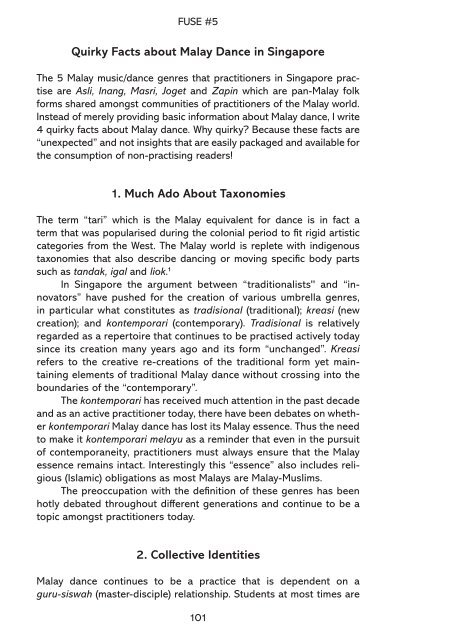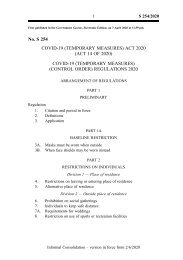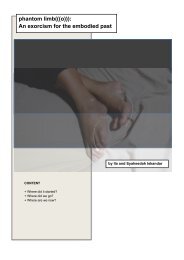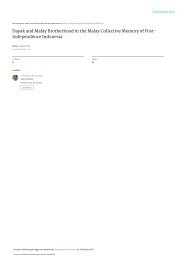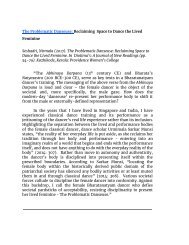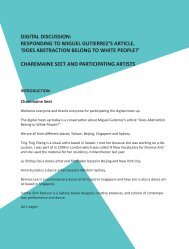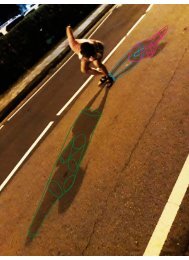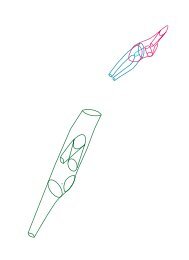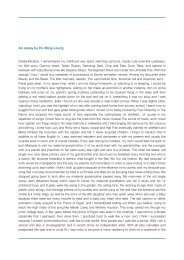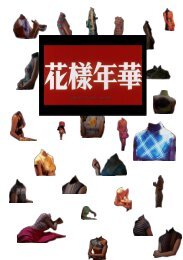FUSE#5
This edition of FUSE consists of articles contributed by artists who participated in Dance Nucleus' programmes in 2020.
This edition of FUSE consists of articles contributed by artists who participated in Dance Nucleus' programmes in 2020.
You also want an ePaper? Increase the reach of your titles
YUMPU automatically turns print PDFs into web optimized ePapers that Google loves.
Finding Soultari’s Lenggang: Walking Otherwise<br />
obligated to stay and learn from one Guru for many years and the<br />
move from one group to another is highly frowned upon. Thus, group<br />
identities are usually associated with a particular master teacher and<br />
in cases when the group has existed for many years, it is associated<br />
with a prominent dance personality.<br />
Due to the close-knit relationship of the community, it is no<br />
wonder when a Malay dancer describes his/her activism in Malay<br />
dance, he/she will refer first to its group identity and then the associated<br />
master/personality. This specific group solidarity is most obvious<br />
when the Malay dance community at large is involved in “collaborations”.<br />
Collaboration for the community means being involved in one<br />
full production with each group presenting their own work and they<br />
are all strung together by a related theme. Although they are connected,<br />
each will try to present a work which is representative of a group’s<br />
ethos/identity/style.<br />
Groups that are actively participating and contributing to the<br />
scene today include, Sriwana, Perkumpulan Seni, Sri Warisan Som<br />
Said Performing Arts Ltd, Era Dance Theatre, Atrika Dance Company,<br />
Ayunda Lestari, Azpirasi Dance Group, Attrians, Kirana Seni, Artiste<br />
Seni Budaya, Dian Dancers, Variasi Performing Arts, Artistari Gentari<br />
and Mak Mak Menari. Also there are more recent collectives founded<br />
by artists with Malay dance background but have chosen to work on<br />
multi-, cross-, inter-disciplinary and cultural works such as Kaizen M.D.,<br />
P7I:SMA and Bhumi Collective. However, there are also independent<br />
artists whose backgrounds are from these groups but have chosen to<br />
do independent work on their own.<br />
3. Malay Cultural Affinity<br />
There are Malay communities living in different modern nation-states<br />
such as Singapore, Malaysia, Indonesia, Brunei Darussalam, southern<br />
parts of Thailand and Philippines. This reality has allowed for the advent<br />
of festivals and competitions that continue to commemorate and endorse<br />
the pan-ethnic affinity but masks this agenda within the language<br />
of modern nationalism which calls for the internationalisation of their<br />
local (national) arts.<br />
Some of these festivals and competitions, which have occurred<br />
annually for about a decade or two, are now quite a brand in the region.<br />
These events will feature groups from these countries and would usually<br />
present works which conform to either one of the recognised Malay<br />
music/dance genres. One such example is Singapore’s Muara Dance<br />
Festival and Indonesia’s Dangkong Festival held in the Riau Islands. An<br />
102


